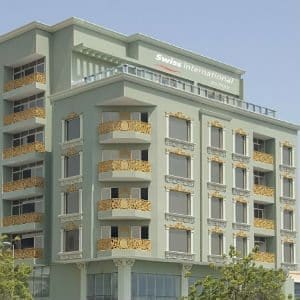Warwick Clifton, Research Director, presents a summary of hotel group activity from The Global Hotel Group and Brand Analyses, which analyses over 2,100 hotel groups representing over 60,000 hotels in over 180 countries globally. www.globalhoteldata.com
This short article considers the relative impact of the hotel groups versus independents within a global context and analyses the extent to which the hotel groups have penetrated various hotel markets with regard to their relative market share.
The article outlines some initial thoughts that have emerged in the first year of an exciting and comprehensive global research project, The Global Hotel Group and Brand Analyses.
We, along with most other industry commentators of the 1990's, predicted the end of the road for independent hotel operators as they suffered at the hands of the growth hungry hotel groups.
Whilst the nature of the hotel industries globally cannot be considered as a homogenous mass, with different regions and countries being at differing stages of industry maturity and therefore having distinctly different industry structures. The general consensus was that the more mature markets of North America and the UK would lead the route to domination by the hotel groups at the expense of the independents.
Indeed, if global hotel supply as provided by the hotel groups in 1992 is compared with the provision in 2012, a picture is painted of the global hotel industry that is increasingly concentrated. See Table One.
Table One, The Global Players….1992
|
Name |
Hotels |
Rooms |
Av. Hotel Size |
|
Bass plc |
1,624 |
229,948 |
142 |
|
Manor Care, Inc |
2,101 |
201,019 |
96 |
|
Marriott |
646 |
150,252 |
233 |
|
Tollman Hundley Hotels |
1,274 |
145,699 |
114 |
|
ITT |
416 |
137,813 |
331 |
|
Accor |
675 |
82,671 |
122 |
|
Pritzker Family Trust |
161 |
76,386 |
474 |
|
Forte Hotels |
721 |
70,029 |
97 |
|
Hospitality Franchise Systems |
469 |
58,164 |
124 |
|
Saisons Group |
162 |
56,572 |
349 |
|
Carlson |
218 |
51,086 |
234 |
|
Super 8 Enterprises |
814 |
50,982 |
63 |
|
Ladbroke Group |
118 |
43,811 |
371 |
|
Grupo Sol |
127 |
34,331 |
270 |
|
Wagon Lits |
280 |
33,863 |
121 |
|
New World Development |
119 |
33,640 |
283 |
|
Aoki |
56 |
32,175 |
575 |
|
Queens Moat Houses |
69 |
19,410 |
281 |
|
Air France |
53 |
18,183 |
343 |
|
Forvaltnings AB Ratos |
112 |
16,636 |
149 |
|
Top 20 sub total |
10,215 |
1,542,670 |
151 |
Compare this ‘top twenty' with that in Table Two: The Global Players….2012. Whilst many of the ‘names' have changed the entities of the majority generally remain in existence despite ownership of them having changed hands and the groups themselves having consolidated through M&A activity.
Table Two, The Global Players….2012
|
Group |
Hotels |
Rooms |
Hotels % sub-total |
Rooms % sub-total |
Av. Hotel Size |
|
InterContinental Hotels Group |
4,665 |
666,162 |
11.4 |
13.1 |
143 |
|
Hilton Worldwide |
3,900 |
633,000 |
9.4 |
12.4 |
165 |
|
Wyndham Hotel Group/International (Formerly Cendant) |
7,152 |
617,536 |
17.4 |
12.1 |
86 |
|
Marriott International |
3,513 |
617,000 |
8.6 |
12.1 |
176 |
|
Accor |
4,430 |
531,000 |
10.8 |
10.4 |
120 |
|
Choice Hotels International |
6,200 |
502,000 |
15.1 |
9.9 |
81 |
|
Starwood Hotels & Resorts Worldwide |
1,080 |
316,000 |
2.6 |
6.2 |
292 |
|
Carlson Hospitality Worldwide |
1,105 |
166,656 |
2.7 |
3.3 |
151 |
|
Home Inns |
1,733 |
150,000 |
4.2 |
2.9 |
87 |
|
Hyatt International Hotels & Resorts |
496 |
135,942 |
1.2 |
2.7 |
274 |
|
7 Days Group** |
1,199 |
110,000 |
2.9 |
2.2 |
92 |
|
Melia Hotels International |
350 |
89,000 |
0.9 |
1.7 |
254 |
|
China Lodging Group |
884 |
86,600 |
2.2 |
1.7 |
98 |
|
LQ Management, LLC. |
803 |
82,062 |
2.0 |
1.6 |
102 |
|
Extended Stay Hotels |
676 |
76,000 |
1.6 |
1.5 |
112 |
|
Interstate Hotels & Resorts * |
373 |
70,000 |
0.9 |
1.4 |
188 |
|
Rezidor Hotel Group * |
328 |
69,071 |
0.8 |
1.4 |
211 |
|
Vantage Hospitality Group |
1,002 |
59,000 |
2.4 |
1.2 |
59 |
|
Louvre Hotels Group |
865 |
57,903 |
2.1 |
1.1 |
67 |
|
NH Hotels |
381 |
56,676 |
0.9 |
1.1 |
149 |
|
Top 20 sub total |
41,135 |
5,091,608 |
100.0 |
100.0 |
124 |
*There is some degree of ‘double counting' in this table, as the majority of these two companies' portfolios are already listed as branded units of other groups also listed in this table. As managed units in the case of Interstate, and a mix of managed units and those they are responsible for on a master franchisor basis in Rezidor's case (Carlson brands).
** As this article was being written, Carlyle Group led a consortium of investors to buy the 7 Days Group and take it private.
The two tables when analysed, demonstrate dramatic consolidation and concentration of hotel supply globally. These ‘top 20' groups represented an increase of circa 31,000 hotels (300%) over the 20 year period.
"the top 6 groups represent approximately 46% group hotel supply globally"
The big are getting bigger. Indeed, these top 20 represent over 66% of total group hotel supply globally. This is emphasised by the top 6 groups representing approximately 51% group hotel supply globally, a situation which compounds the paradox that is global hotel supply. At one extreme, the more developed markets of North America are epitomised by ‘hard' branding and extreme levels of market concentration. The other extreme is illustrated by the emerging, less developed markets where brand and group affiliation is in the minority. Where it does exist, it is generally through domestic affiliations or upper-tier hotels being affiliated to ‘International' groups in primary ‘key' locations, with the majority of hotels being ‘independent' in the truest sense of the word. The European situation is somewhere in the middle. Although once again, it should not be seen as a homogenous mass, with each country having distinct market traits, features and patterns. Indeed, the industry ‘prophets' of the early to mid Nineties beckoned the onslaught of a branded and highly concentrated hotel supply revolution in the UK and France, but to date, this has not materialised to the extent anticipated.
The Changing Nature of the Groups
Over the decades the groups have changed in character and structure as well as in name. There are less ‘diversified conglomerates' in the rankings. As the global economies have changed considerably and the industry has matured, resulting in the changing appeal of the industry to investors. The industry has without doubt become more specialised and professional, with ‘Hotel Divisions' within larger corporate entities being separated and often ‘floated' as standalone entities ( E.g. the separation of Rezidor from its airline parent SAS).
As the ‘independent' hoteliers have been put under increasing pressure to adapt or die, many have sought the benefits of becoming franchisees of established brands to facilitate them achieving ‘group' related benefits (brand perception, advertising etc) via the relatively low cost of franchise fees. This demand for ‘membership' from hoards of independent hoteliers has resulted in the increasing domination of Franchisors in terms of numbers and their influence on hotel supply activities. These Franchisors, whilst seeking global penetration have encouraged and essentially created the emergence of ‘true' master franchisors.
In parallel, it is primariIy these same franchisors that have been fundamental in increasing the number of standardised ‘budget' offerings through franchise activity. These have been the main reason for the lowering of the average hotel size over the last two decades. They have appealed to both consumers and investors as a ‘value' segment of the industry, which has experienced amazing growth through its standardised, low cost development model facilitating it to expand rapidly in tertiary locations, which historically had been the domain of the ‘independents'.
The maturity of the industry and its specialisation and separation from its 1980's persona as a real estate investment vehicle has resulted in an increased separation of Bricks/Brain. Many of the major groups now operate primarily as Franchise Model businesses (Carlson), as Management Contractors and Lessees of hotels rather than the traditional model of ‘Owner Operators'. Only the future will tell if this trend to ‘Asset Light' is ‘Asset Right'. Despite this trend, there remains an element of ‘Owner Operator' in the majority of the groups with most selecting a multi-strategy approach to the hotel business. This is highlighted by the fact that there is only one pure management company in 2012's top 20 (Interstate do actually own a handful of hotels but they are essentially a management contracting company) .
The entrance of three Chinese groups into the top 20, shows how the Chinese industry is developing. All three groups' portfolios are essentially domestic in nature with a focus on the budget and economy sectors. However, their enormous growth and continued potential growth both domestically and internationally make them of great interest.
Table Three, Key Global Supply Features 2012 (Total group affiliated stock)
|
No. Hotels |
58,639 |
|
No. Bedrooms |
7,676,279 |
|
No. Groups |
2,205 |
|
No. Hotel Operator Groups |
1,441 |
|
No. Brands |
1,308 |
|
No. Hotel Owners |
1,616 |
|
Average No. Bedrooms per Hotel |
131 |
|
No. Hotels in development |
2,428 |
|
No. Rooms in development |
442,424 |
As previously discussed, despite referring to a ‘Global Industry', the industry varies drastically from country to country, and equally from continent to continent. See Table Four.
Table Four, Supply by Continent 2012
|
Hotels |
Rooms |
Average Rooms per Hotel |
No. Countries |
Hotels % Total |
Rooms % Total |
|
|
North America |
32,201 |
3,984,867 |
124 |
31 |
54.9 |
51.9 |
|
Europe |
14,240 |
1,818,385 |
128 |
49 |
24.3 |
23.7 |
|
Asia |
9,218 |
1,422,297 |
154 |
40 |
15.7 |
18.5 |
|
Africa |
1,057 |
186,919 |
177 |
41 |
1.8 |
2.4 |
|
Oceania |
1,230 |
149,029 |
121 |
10 |
2.1 |
1.9 |
|
South America |
693 |
114,782 |
166 |
12 |
1.2 |
1.5 |
|
Totals |
58,639 |
7,676,279 |
181 countries |
100.0 |
100.0 |
Table Four demonstrates the dominance of North America in representing group hotel supply, with circa 52% of supply occurring in this continent. Therefore it's importance in terms of hotel supply features and it's indigenous players are over-represented when ‘averaging' out the figures on a global basis.
However, the Americans are not having it all their own way, the Increasing importance of Europe is evident having developed from circa 10,000 group hotels in 1994. Europe as a host has become a major battle ground in global developments in the last two decades, resulting in an increase in its group hotel supply by 30% in this period.
These continental developments of the ‘old' and ‘new' worlds, however, could potentially be surpassed by the dramatic ‘entrance' of Asia as both a major host and player. Despite numerous fluctuations in fortune over the period, the countries of central and eastern Asia in conjunction with the Middle East, have developed at a pace with enormous growth in not only the hotel groups normal ‘hunting grounds' of business/hub destinations but also in resort destinations.
The differing changes across the continents can be highlighted by a cursory glance at the principal host countries. See Table Five.
Table Five, Top Host Countries
|
Hotels |
Rooms |
Hotels % |
Rooms % |
|
|
USA |
29,555 |
3,518,779 |
50.4 |
45.9 |
|
China |
6,036 |
781,284 |
10.3 |
10.2 |
|
Spain |
2,080 |
339,701 |
3.5 |
4.4 |
|
UK |
3,224 |
308,464 |
5.5 |
4.0 |
|
France |
3,369 |
283,664 |
5.7 |
3.7 |
|
Germany |
1,400 |
220,381 |
2.4 |
2.9 |
|
Canada |
1,540 |
201,777 |
2.6 |
2.6 |












